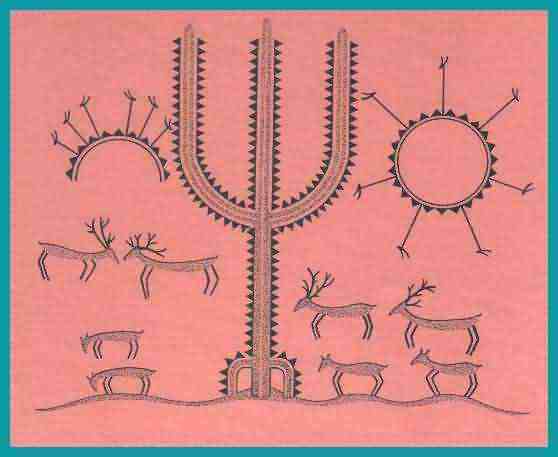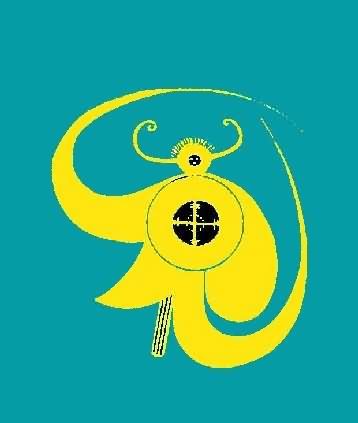




(11) The Names of the Ancient Celtic Festivals and their Meanings
Samhain (pronounced "Shahwain") is the old Celtic festival anciently celebrated at the new Moon in Scorpio and later, under Christian influence, called "All Saints Day" and celebrated on November 1st. Yet the old ways were not totally submerged, as is shown in the persistence of Hallowe'en on the night of October 31st, which is still celebrated from Europe to North America. Samhain is now called "All Hallows Tide" and "Hallowe'en". Though commonly thought to be a contraction for "All Hallows' Eve" the last part of the word "Hallowe'en" is actually a phonetic rendition of the Celtic word uine, meaning "time" or "opportunity" i.e. an opportune or auspicious moment.
An alternate name for Samhain, also embodying the word for "time" or "tide" in old Irish, is Samhuin (Shaween), a feminine noun which is also the name of the goddess of Summer's End or the beginning of the cold season. This ancient feast day was also called la Shawna, "the day of Shaween", or the day of Summer's End. The Irish la is "day" and samhna is the genetic of samhain. Similarly, our All Hallows Eve was oidce Samhna or "night of Shawain".
Interestingly, the root of oidce, "night", is oid, meaning "music" (and/or song): night was anciently a time of music and enchantment. The root samb in Samhuin or Samhain holds more secrets, since it denotes a heavy beam that was put across a gate to secure and lock it. Hence it really meant the sense of ease and tranquillity that comes from security. By the same token samhain can also mean pleasure or delight. In a shamanic context, there is no greater pleasure than going through an interdimensional Gate to a higher type of world, knowing the door is secured behind one so that one's entry into a more joyful reality is assured.
It is no wonder that Samhain begins the cycle of the year and holds the key to the other three festivals. These four great sacred times were preserved by the Celts but reach back into primordial eras of which no written record survives. They live still in the memories of us all, in the deepest layers of the trans-incarnational record within us. An interesting illustration of this fact is in a poem written by Ourania in 1985 while she was still in Cambridge, England. She then entitled it "Windswept Summer's Day", but in the light of insights gained on the Path she would now call it "The Day of Shaween - Summer's End":
When I survey the richness of the land
On a storm-tossed summer's day
My eye weeps with the wind
Breathes with the storm
as it weaves me into the dance
of air laughing across the fields.
These winds do pass, and so once more
the land exhales its wealth
of perfume and flowers
with a gentle sigh, languidly stretching
into the warmth of a summer's day.
And yet I see a few leaves falling …
Already autumn soughs deep
and beckons Summer's End.
The next sacred festival is Imbolc - a later variant of the earlier Imbolg - and originally celebrated at the new Moon in Aquarius, but later Christianized into Candlemass on February 1st. The old Celtic name means "in my (im) womb (bolg)" and is spoken with regard to all creatures by the Great Goddess of All Life, the Norse Freya and the Celtic Anna whose name, latinized, became Dea Anna or Diana. Her worship re-surfaced in the wicca religion so well delineated in her studies of it by the egyptologist/ethnographer Dr. Margaret Murray.
Then came Beltane, still celebrated in corrupted form as May Day on the first of May. Anciently it was at the first full Moon with the Sun in the sign of Taurus. The older name was Bealteine or Bel-tene, "Lord of the (Life-)Fire", teine or tene meaning "fire" and Be(a)l, "Lord". The name of the old Gaulish deity Bel(enos) is retained in the name Sauvabelin, (the forest of Belinos) in the ancient Celtic homeland of what is now the canton of Vaud in Switzerland.
Finally came Lughnasadh, celebrated at the first full Moon with the Sun in Leo, and later corrupted into "Lammas" on August 1st. The old Irish word lamh, meaning "skillful (weapon-launching) hand" is the root of lam in Lammastide. So the name Lughnasadh is connected to the old Celtic deity Lugh, who had a divinely magical spear.
Next Chapter